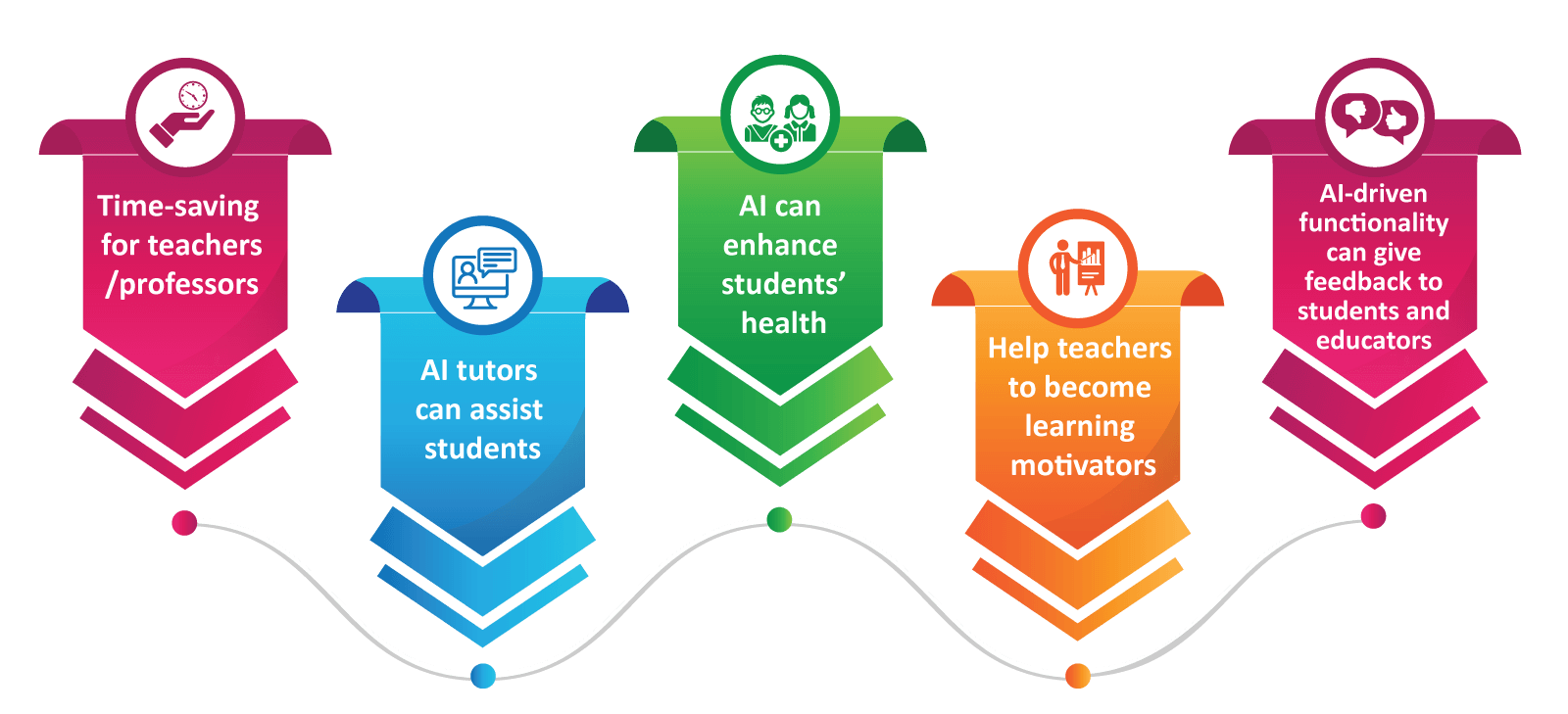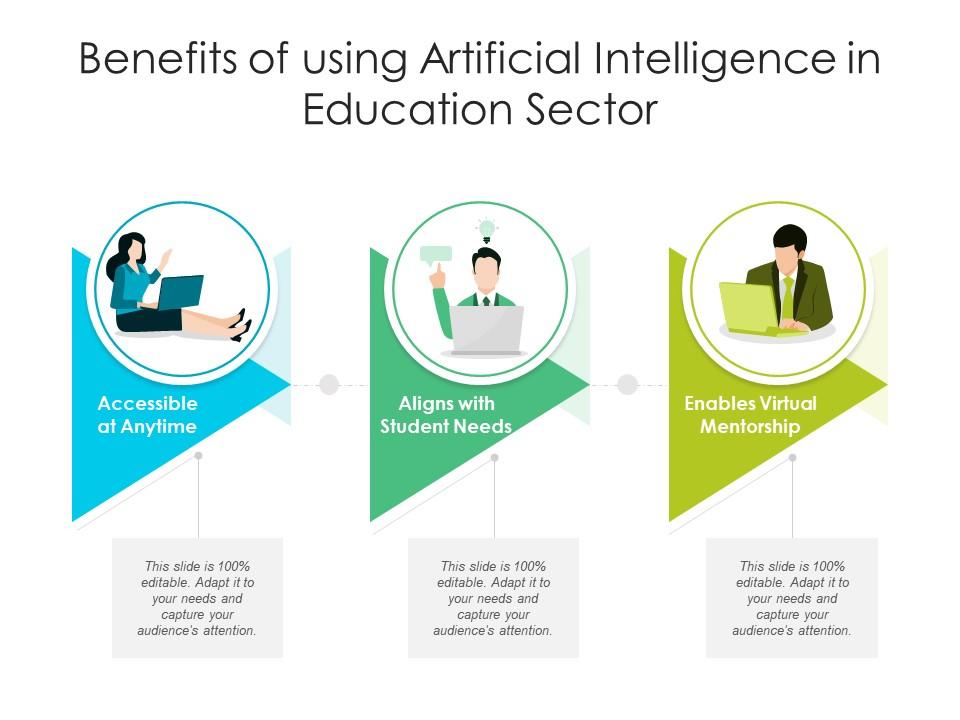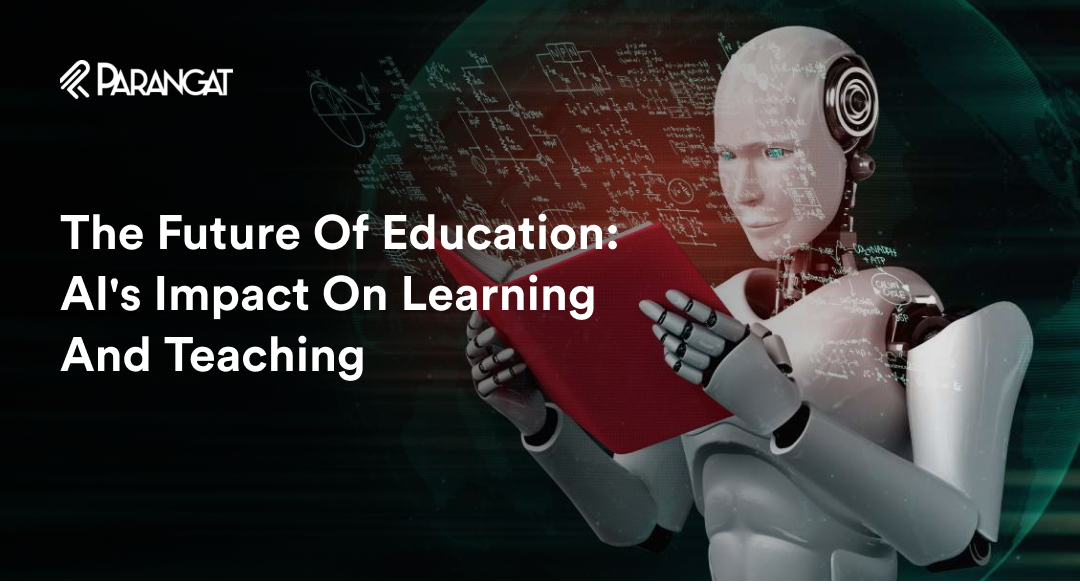Artificial Intelligence (AI) has become integral to human life in today’s rapidly advancing world. It is transforming various industries and revolutionizing how you work and interact. One field where AI is making remarkable strides is the education industry.
Did you know that the AI in Education Market was valued at $4 billion in 2022, with an anticipated growth rate of over 10% from 2023 to 2032? The increasing demand for personalized learning experiences drives this growth. But do you truly understand AI’s impact on education industry?
If you’re curious, read this article to learn about the fascinating role of AI in education.
What do you Mean by AI?
Artificial intelligence is a branch of computer science focusing on developing intelligent machines capable of mimicking human cognitive processes.
AI allows machines to perform tasks normally requiring human intelligence, such as speech recognition, problem-solving, and decision-making.
Some of the key features of AI include:
- Automation: AI automates repetitive tasks, freeing time for more complex and creative activities.
- Personalization: AI enables personalized experiences by adapting content and pacing to individual needs and preferences.
- Data Analysis: AI can analyze vast amounts of data to uncover valuable insights and patterns that help in decision-making.
- Intelligent Assistants: AI-powered virtual assistants can provide instant support and answers in various fields.
- Enhanced Efficiency: AI streamlines administrative processes, improves resource allocation, and optimizes various operations.
Role of AI in Education

AI plays a significant role in transforming the education landscape, offering various benefits and opportunities. Here are some key ways in which AI is impacting education:
1. Personalized learning
Personalized learning is a teaching approach that recognizes students’ unique needs and learning styles. AI algorithms can analyze extensive student data like assignment performance, interactions with learning materials, etc.
By leveraging this data, AI algorithms can gain students insights like:
- strengths and weaknesses
- learning preferences
- progress over time
This enables the algorithms to generate personalized recommendations and feedback that align with the specific needs of each student.
For example: Suppose a student excels in visual learning. In that case, the AI system may suggest visual aids or interactive simulations to enhance their understanding. Contrarily, suppose a student struggles with a particular concept. The AI system can provide additional resources and targeted practice exercises. This will help to address the knowledge gap.
2. Intelligent Tutoring Systems
Intelligent Tutoring Systems (ITS) adapt the content and delivery methods to cater to each student’s needs and learning style. These systems utilize AI to:
- deliver customized instruction
- track student progress
- identify knowledge gaps
- provide targeted support
Through continuous data analyses and progress monitoring, ITS can identify areas of weakness or misconception. Moreover, students can receive immediate feedback and explanations. This can help them enhance their understanding and problem-solving skills. ITS helps foster academic growth and improve overall educational outcomes.
3. Automated Grading and Feedback
Automated grading and feedback systems powered by AI streamline the evaluation process in education. These systems can automatically assess quizzes and tests, saving teachers valuable time. Moreover, a study showed that educators could save up to 70% of their time using AI grading tools.
AI algorithms can help to:
- analyze student responses
- compare responses to predefined criteria or model answers
- Assign grades according to the standards provided
Automated grading also provides students with immediate feedback on their work. This will allow them to understand their mistakes and areas for improvement. This timely feedback promotes a more positive learning process. Due to this, students will actively engage in their learning journey and make meaningful progress.
4. Data-driven Decision Making
This involves using AI to analyze large volumes of educational data to extract valuable insights. From this data, educators and policymakers can identify patterns and correlations. These insights provide a deeper understanding of:
- student performance
- student engagement
- learning outcomes of students
With this information, educators can make informed decisions about curriculum design. They can tailor strategies to meet the needs of individual students or specific groups.
Furthermore, data analysis helps optimize resource allocation. It ensures that resources and support are directed where they are most needed. This ultimately improves the effectiveness and efficiency of the education system.
5. Accessibility and Inclusion
With AI technologies, students with disabilities can access various assistive features. For example:
- Real-Time Transcription Services can convert spoken language into text. It will allow students with hearing impairments to follow lectures and discussions.
- Text-To-Speech Conversion can enable students with visual impairments to access written materials.
- Adaptive Interfaces, Speech Recognition, and Predictive Typing can facilitate communication and engagement for students with motor disabilities or learning challenges.
These assistive features empower students with disabilities to participate fully in educational activities, ensuring equal opportunities and fostering a more inclusive learning environment.
6. Efficient Administrative Processes
AI’s role in automating administrative processes revolutionizes the efficiency of educational institutions. By utilizing AI, administrative tasks can be automated. Some examples could be:
- Automating the process of creating and managing schedules for classes, exams, etc.
- Streamlining record-keeping processes by organizing student data and other administrative information.
- Handling the entire enrollment process, from application submission to placement
It can save time and effort, allowing teachers and administrators to focus on more critical aspects of their work. It also reduces the possibility of human error and improves data accuracy.
7. Enhanced Collaboration
Enhanced collaboration through AI-powered tools in education can promote effective communication and teamwork. Educational institutions can facilitate seamless communication in various ways:
- real-time messaging
- video conferencing
- document sharing across geographical boundaries
- automatic language translation
- content recommendation based on individual preference
Moreover, these tools enable global learning communities. It means connecting students and educators from different parts of the world. They can exchange ideas, perspectives and understand various cultural insights. By exceeding physical limitations, AI-powered collaboration promotes diverse and enriching educational experiences. It can prepare students for the future interconnected world they will face.
Opportunities & Challenges of AI in Education Market
Here are some opportunities and risks of AI in Education Market
Opportunities:
The integration of AI in education presents a plethora of opportunities, such as:

1. Efficient Resource Allocation
AI can analyze data to understand the needs and preferences of students, teachers, and the educational system. By doing so, AI can help optimize the distribution of resources such as teachers, learning materials, and technology.
2. Predictive Analytics
AI’s ability to analyze large volumes of data can provide valuable insights and predictions about student performance, allowing for proactive interventions and targeted support.
For example, AI algorithms can identify patterns in student data and use them to predict which students may be in certain subjects. You would be surprised to know that an AI accurately predicted students’ final grades with 80% accuracy, preventing 34,712 students from failing.
3. Access to Quality Education
Access to quality education is a fundamental right, but it may be limited in remote areas. AI-powered platforms offer a solution by expanding access to high-quality educational resources and learning opportunities. AI can provide virtual classrooms and digital libraries that can be accessed from anywhere with an internet connection. This means that students in remote areas can access educational content and resources previously out of reach.
4. Virtual Reality and Augmented Reality
Combining AI with VR and AR makes educational experiences more interactive, immersive, and memorable. In VR, students wear special headsets that transport them to virtual environments and let them interact with 3D objects and simulations. For example, students can explore historical landmarks or travel to outer space.
AR, on the other hand, helps bring textbook images to life, visualize complex concepts, or interact with virtual objects placed in their physical environment.
5. Lifelong Learning and Skill Development
AI can facilitate continuous learning and skill development by offering personalized recommendations for ongoing education and training based on individual career goals and market demands.
For example, someone wants to pursue a career in web development. In that case, AI can suggest specific programming languages to learn or relevant online courses to watch. This personalized guidance helps individuals stay updated with the latest industry trends and acquire the skills needed for their chosen career path.
Challenges:
While focusing on the potential of AI, it’s also crucial to consider the challenges of AI that come with its use. Some of the major challenges could be:
1. Ethical Considerations
AI introduces ethical concerns that need to be addressed. Privacy is critical, as AI systems often collect and process large amounts of personal data. Protecting this data and ensuring it is not misused or shared without consent is crucial.
Data security is another challenge, as AI systems need robust measures to safeguard data from unauthorized access or breaches. Additionally, algorithmic bias must be carefully managed to prevent discriminatory outcomes, as AI algorithms can perpetuate biases in the training data.
2. Teacher Training and Support
For educators to effectively incorporate AI tools into their teaching practices, they require adequate training and ongoing support. Many teachers may not have prior experience or familiarity with AI technologies. Therefore, institutions need to offer professional development programs to enhance their knowledge and skills. Ongoing support and guidance are necessary as technology evolves. This support will help educators maximize AI’s potential in education and adapt to new tools and methodologies.
3. Cost and Infrastructure
Implementing AI systems in education requires substantial investments in technology infrastructure and ongoing maintenance. Schools and institutions must allocate resources to procure AI tools, hardware, software, and connectivity. Additionally, they need to consider the costs associated with system maintenance, upgrades, and training for technical support personnel.
4. Human Connection and Social Skills
As AI becomes more prevalent in education, there is a concern about the potential reduction in opportunities for human interaction and the development of social and emotional skills.
AI tools, while offering various benefits, should be integrated in a way that does not undermine the importance of human connection. Educators must carefully balance AI use with activities that foster face-to-face interactions, empathy, and communication skills among students.
5. Equity and Access
It is very easy for the rich to get richer and the poor to get poorer without equitable access to resources. Thus, ensuring equitable access to AI-powered education tools and resources is crucial to avoid worsening educational inequalities. The availability of AI tools should not be limited to privileged schools or students. Establishing proper guidelines and regulations would be highly necessary with the development of AI in the education sector.
Examples of AI in education
Here are some real-life examples of AI use in education to help you understand its potential:
1. Thinkster Math
Thinkster is an innovative mathematics tutoring program that combines human interaction with AI technology. Designed for laptops, tablets, and desktops, Thinkster provides custom programs for kindergarten to 12th-grade students. The AI component of Thinkster tracks students’ progress step-by-step, offering real-time feedback and guidance. It helps students understand why their answers are correct and identifies areas where they can improve.
2. Duolingo
Duolingo is a language-learning tool that uses AI to make learning personalized and effective. It adjusts the difficulty of questions based on your answers, providing a customized assessment. The platform also tracks your progress and reminds you to practice words you may forget. Moreover, AI-powered chatbots engage in conversations and give helpful responses making learning more exciting.
Empower Learners Through AI Integration
The future of education can be excellent with the development and integration of artificial intelligence. AI offers immense potential to enhance learning, improve instructional practices, and create personalized educational experiences. Furthermore, collaboration between human educators and AI technologies can open new doors and pave the way for a more empowered generation of learners.
Partner with Parangat, a leading AI software development company, to change the education landscape of your institution. We have expertise in Natural Language Generation, Knowledge Virtualization, and many more. We understand that every industry has different needs; thus, we provide customized solutions with ongoing support and maintenance. Contact us today and take a step forward into the future.

With roll up sleeves, dive in and get the job done approach, it was in the year 2010 when Sahil started Parangat Technologies. Emphasizing a healthy work culture and technology-driven company, he has successfully created a workplace where people love to work and live. He is a software engineer and a passionate blockchain enthusiast.


 +44-7511-112566
+44-7511-112566 +353-1-8079571
+353-1-8079571 +1-415-799-9792
+1-415-799-9792

